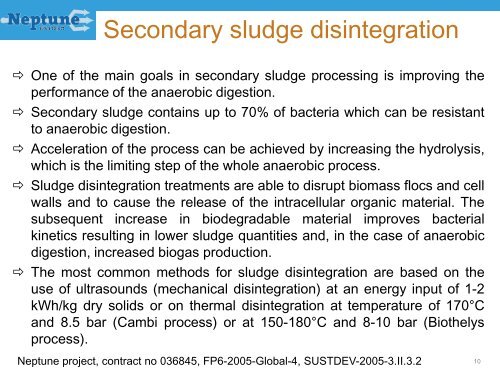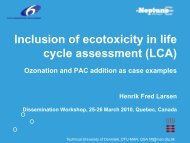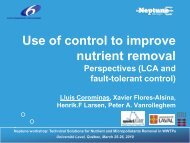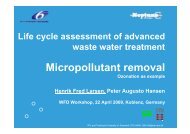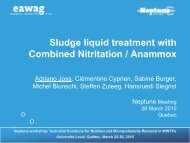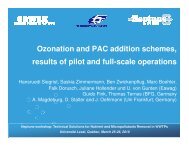Sustainable sludge handling - EU Project Neptune
Sustainable sludge handling - EU Project Neptune
Sustainable sludge handling - EU Project Neptune
You also want an ePaper? Increase the reach of your titles
YUMPU automatically turns print PDFs into web optimized ePapers that Google loves.
Secondary <strong>sludge</strong> disintegration<br />
One of the main goals in secondary <strong>sludge</strong> processing is improving the<br />
performance of the anaerobic digestion.<br />
Secondary <strong>sludge</strong> contains up to 70% of bacteria which can be resistant<br />
to anaerobic digestion.<br />
Acceleration of the process can be achieved by increasing the hydrolysis,<br />
which is the limiting step of the whole anaerobic process.<br />
Sludge disintegration treatments are able to disrupt biomass flocs and cell<br />
walls and to cause the release of the intracellular organic material. The<br />
subsequent increase in biodegradable material improves bacterial<br />
kinetics resulting in lower <strong>sludge</strong> quantities and, in the case of anaerobic<br />
digestion, increased biogas production.<br />
The most common methods for <strong>sludge</strong> disintegration are based on the<br />
use of ultrasounds (mechanical disintegration) at an energy input of 1-2<br />
kWh/kg dry solids or on thermal disintegration at temperature of 170°C<br />
and 8.5 bar (Cambi process) or at 150-180°C and 8-10 bar (Biothelys<br />
process).<br />
<strong>Neptune</strong> project, contract no 036845, FP6-2005-Global-4, SUSTDEV-2005-3.II.3.2 10


